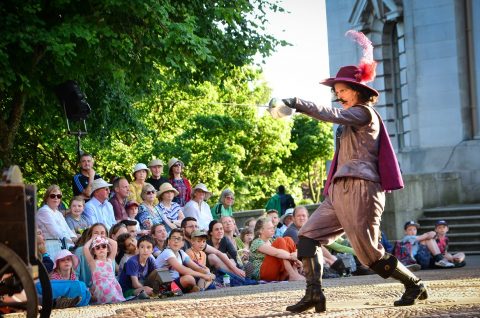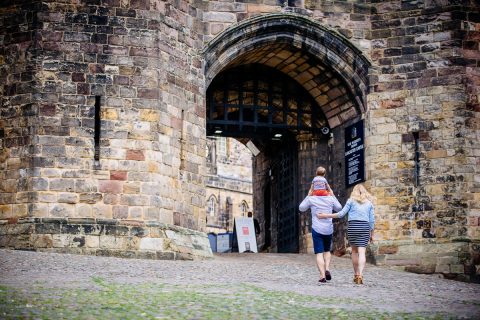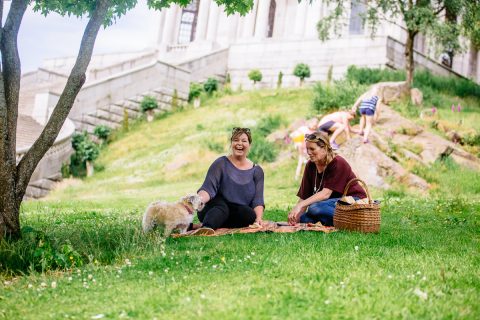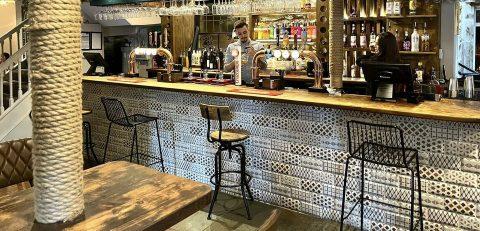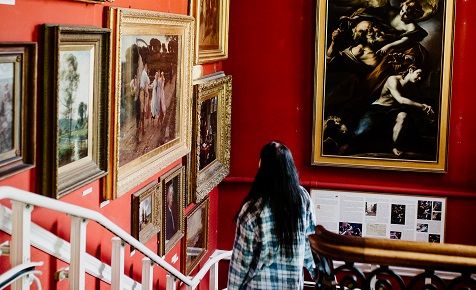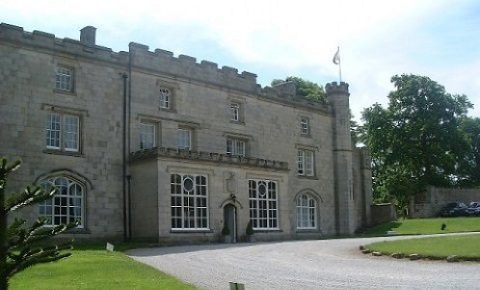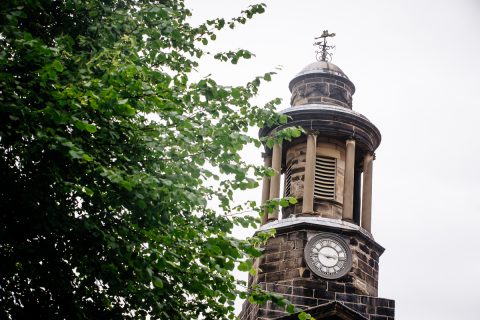The Insus Tombstone
 | The Insus Tombstone Sandstone, cAD75-100 In 2005, a team from the University of Manchester Archaeological Unit were working on a site at the corner of Aldcliffe Road and Henry Street. They uncovered the damaged but incredibly detailed remains of the tombstone of a Roman cavalry soldier; one that would prove to be a rare depiction of triumph over the enemy.
|
One of Lancaster City Museum’s most popular objects, the Insus Tombstone was first discovered in Lancaster in 2005. It is thought to date from the first century.
The tombstone is actually a memorial and was found with no burial remains. It is a ‘Reiter’ or ‘rider’ type that depicts a mounted cavalryman in action with the decapitated head of an adversary, the body at his horse’s feet. The design makes this stone unique.
Standing at seven feet high and three feet wide, it is hewn from a kind of sandstone called millstone grit. The fact that it is made of this stone shows that it was likely created in the Lancaster area. The figurative detail is well executed, but the inscription less-so, suggesting that perhaps it was created by different people.
Below the carving is an inscription:
DIS
[M]ANIBVS INSVS VODVLLI
[FIL]IVS CIVE(S) TREVER EQVES ALAE A VG
(T] VICTORIS CVRA TOR DOMITIA [HF C]
This has been translated as:
‘TO THE GODS OF THE UNDERWORLD:
INSUS, SON OF VODULLIUS,
A TREVERAN CITIZEN, A TROOPER IN THE ALA AUGUSTA,
CURATOR OF THE SQUADRON OF VICTOR. DOMITIA, HIS HEIR, WAS RESPONSIBLE FOR THE ERECTION OF THIS TOMBSTONE’.
This gives us clues as to the identity and background of the rider. Insus was from the Treveri tribe, which places him as originating from western Germany. The title Curator has been taken to mean he was a junior officer of the Roman army. Because he is only referred to by a single name, this means that he was not a Roman citizen.
At the top of the tombstone you can see the head of a Medusa, whose gaze turned anyone to stone who dared look at her. Including Insus, his horse and the decapitated enemy. One further decoration used are oak-leaves. In the Roman world, the oak-leaf crown was awarded for bravery.
Take a look at the 3D model of the tombstone, which was created during an Oxford University project called LatinNow.


